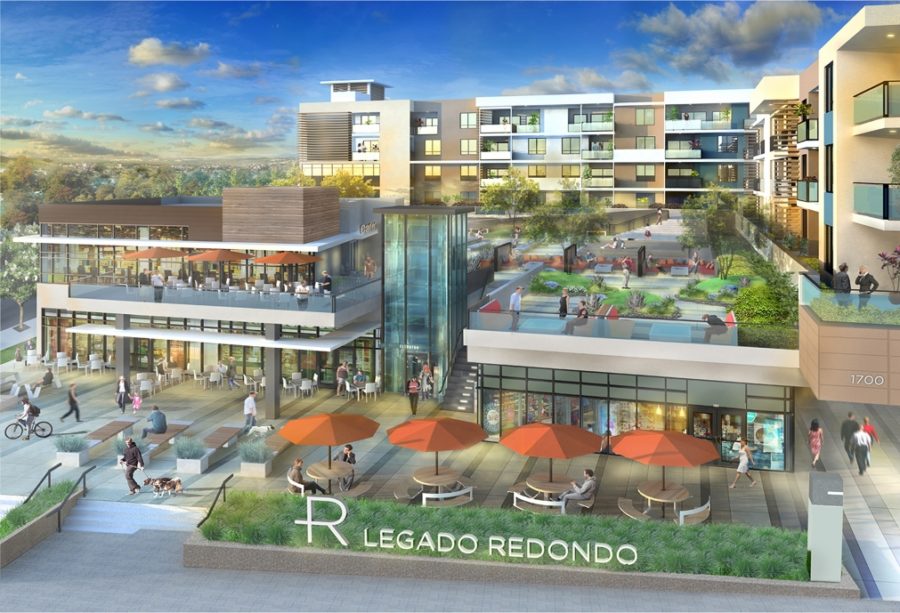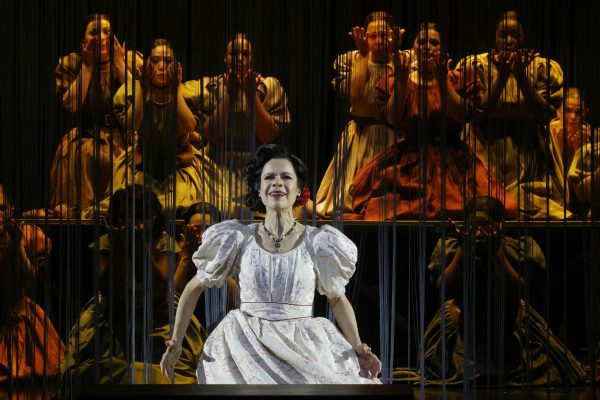As the fervor fades over the development proposed in the city’s recent election, a low rumble is beginning to pick up at the corner of Pacific Coast Highway and Palos Verdes Boulevard. There, resident concerns are growing over the potential construction of a new mixed-use development at a 4.3 acre site at the southeast corner of PCH and Palos Verdes Boulevard, which currently plays home to a strip of retail shops and a former Bristol Farms grocery store.
The Legado Redondo Mixed-Use Project is set to be discussed by the Planning Commission at 7 p.m. on March 19. The key issue raised by residents is the potential for traffic increase and overflow, much as it was with Harbor Village, the AES-proposed development. That project, which would have replaced AES’s Redondo Generating Station along the city’s waterfront, died along with the defeat of Measure B on March 3.

The Legado project, as proposed, would add 180 residential units to the property, along with 181,373 square feet of new development, including up to 24,000 sq. ft. of market space, 7,600 sq. ft. of restaurant space and 6,000 sq. ft. of retail space. It would also renovate the aging Palos Verdes Inn, without adding new rooms or square footage.
Todd Loewenstein, of Redondo Residents for Responsible Redevelopment, said that he sympathizes with resident concerns, and that he hopes for the number of residential spaces to be decreased.
“With 180 apartments on that space, that’s more dense than the AES property,” he said. “We want it see the land developed, not just sit there and become an eyesore, but we would hope that the Planning Commission and City Council would come to the same conclusion.”
“It’s not going to revert back to Bristol Farms,” Redondo Beach Mayor Steve Aspel said. “We need the hotel there — those bring in tons of money to the city in Transit Occupancy Tax — and it needs to be majorly renovated.
“If people are expecting it to go back to Bristol Farms or the Plush Horse, that’s not going to happen” he said, referring to the nightclub that at one time took residence in the space. “They have the ability to build something that’s compatible with the neighborhood and doesn’t exceed our current zoning rules.”
A common thread through the list of comments provided alongside the Environmental Impact Report, available at the City of Redondo Beach’s website, are concerns over increased traffic and noise along Pacific Coast Highway and spilling into surrounding neighborhoods. An analysis by Overland Traffic Consultants indicates that Legado Redondo would generate 2,677 daily trips.
“It is already, and increasingly, difficult for cars exiting Camino de las Colinas to see on-coming traffic southbound traffic (sic) due to parked cars that block visibility,” Redondo resident Amy Josefek said. “Camino de las Colinas is already the de facto alternative for impatient northbound PCH drivers, who do not wish to wait for the light at the Palos Verdes intersections make a left into Camino de las Colinas. Additional traffic should not be funneled through the narrow Riviera neighborhood streets creating problems for pedestrians, and children playing outside their homes.”
Aspel said that he understood the resident’s concerns. “As we saw with the defeat of Measure B, ‘residential’ is a four-letter word in Redondo Beach. The intersection at Palos Verdes Boulevard and Pacific Coast Highway is already extremely busy now, and it’s not busy from RB residents,” he said, noting the commuters coming through from Lomita, Torrance and the Palos Verdes Peninsula.
Traffic worries, Loewenstein said, were a driving force behind Measure B’s defeat — and they came in from around the South Bay. “We even had donations to fight Measure B from folks in Hermosa and Manhattan,” Loewenstein said. “If there’s a bottleneck of traffic, what becomes the next street over becomes the next town over, becomes a regional issue. If you’re commuting from LAX to Palos Verdes, you’re pretty concerned about the local traffic problems; it becomes your problem.”
Despite community concerns, a traffic analysis prepared by Overland Traffic Consultants noted that there would be “no significant impact” to 11 of the intersections contemplated in the study. The only intersection that was projected to be significantly impacted by the Legado project was at Pacific Coast Highway and Palos Verdes Boulevard, which would experience significant delays during peak afternoon hours.
However, Overland noted that traffic could be “fully mitigated” by widening the west side of Pacific Coast Highway north of Palos Verdes Boulevard to provide a dedicated southbound right turn lane. Such a project would have to be designed and constructed by the Legado project and would have to meet standards set by Caltrans and the cities of Redondo Beach and Torrance.
A spokesperson for Legado declined an interview, citing preparation for Thursday’s public hearing, and sent the following statement:
“Legado is committed to bringing a first class project to Redondo Beach that the city can be proud of. We have done extensive outreach and worked tirelessly with the city to address the concerns of citizens while preserving the spirit of the general zoning of the property. We are looking forward to the public hearing and continued efforts to listen to, and understand the input of the residents and city.”










